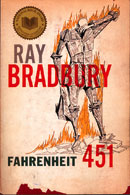The April issue of
Discover includes personal interviews with
Judith Curry, chair of the Georgia Tech School of Earth and Atmospheric Sciences and
Michael Mann, director of Pennsylvania State University's Earth System Science Center. Most striking in my mind was Mann's observation, "Right now, there's the largest disconnect that has ever existed between the confidence that we have scientifically and where the public is, at least in the United States." Ironically, just as public confidence in climatology is waning, Mann points out that climate scientists are now able to provide better assessments of current climate trends in perspective of what has happened in the past. Scientists have more information on how climate systems are evolving in response to human impact, and more powerful supercomputers able to run more accurate climate models. The science is more certain as public opinion swings toward uncertainty.
This is a frightening trend, says Mann, and reflects a reversal of significant factors that made 2006 a peak year in terms of public awareness in and acknowledgment that global warming was occurring and could be attributed, in part, to anthropogenic causes. He noted, "Some people say that climate change became too closely associated with a partisan political figure and that polarized the debate. We've had a cold winter. We've got a bad economy. It's a bad time to be talking about major changes in our energy economy that some argue could be costly."
Vacillating public opinion in matters of critical environmental threats presents a huge challenge for policy makers, scientists and those of us who want future generations to live peaceably in a healthy environment (and isn't that is all of us?). As was emphasized in several sessions at the 2010
American Association for the Advancement of Science Annual Meeting, the cultures of scientific researchers, economists, politicians and lobbyists operate with different expectations and values. The three-legged stool of "
Science, Politics, and the Public" is mighty unsteady if the public lacks scientific literacy, and adopts a debate mentality rather than informed and reasoned dialogue. Debate is intended to press one's own point of view, while dialogue in intended to increase common understanding. We could use much more of the latter.
Read the interviews with Mann and Curry on pages 56-62 of the April issue, now in the Science Library or your neighborhood bookstore. [Text of the interviews is not freely accessible at the Discover web site although other comments from Mann are available in the
Discover blogs.] Mann also gives important context to the leaked emails to and from climate scientists at the University of East Anglia [
more at RealClimate].
Discover Magazine archives






































